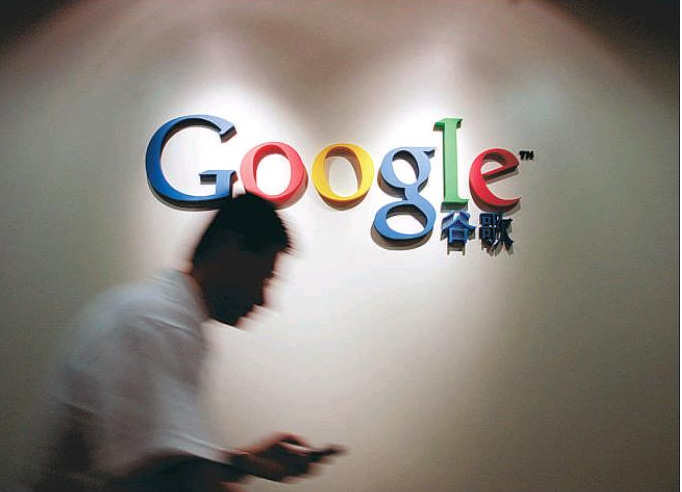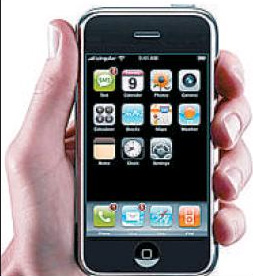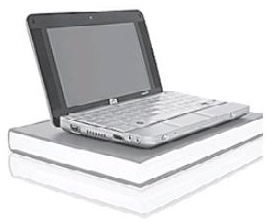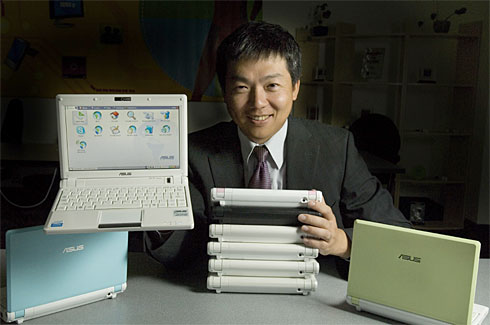Tarmo Virki
Sun
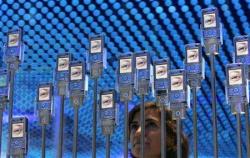
A woman poses next to cell phones at the ‘Internationale Funkausstellung’ (IFA) 2006 consumer electronics fair in Berlin September 1, 2006. Virtual worlds, mobile coupons and bar-code readers on cell phones are the next technology wave that U.S. chain stores must ride if they hope to stay competitive in the fast-changing world of global retail. . REUTERS/Tobias Schwarz
HELSINKI – Sony Ericsson unveiled on Tuesday the first globally available phone with a high-resolution 8 megapixel camera as the handset industry mounted a fresh attack on traditional camera makers.
For more than a year, the best cameraphones have had a 5 megapixel camera, comparable to most digital cameras. A few higher-resolution models are sold in South Korea.
Now other vendors are expected to follow Sony Ericsson’s lead, threatening the camera industry which has had the upper hand with higher pixel counts and better quality pictures.
Sony Ericsson’s C905 Cybershot model will go on sale in the fourth quarter, in time for the holiday rush. Analysts said Samsung Electronics and LG Electronics were set to unveil their own models shortly.
The world’s top cellphone maker Nokia will have a 5 megapixel camera in its next flagship phone model N96, but it is also looking to deploy higher-resolution cameras.
Cameraphones sales long ago leapfrogged traditional camera sales, allowing Nokia to add “the world’s largest camera maker” to its title as handset leader.
The world’s top digital camera makers — Canon Inc, Sony and Eastman Kodak — enjoyed a 24 per cent expansion in their market last year. But consumer spending is expected to be crimped in key western markets.
“The mobile cameraphone industry is closing the quality-gap on portable digital still cameras and this represents an opportunity for growth and new markets,” said Neil Mawston, an analyst at research firm Strategy Analytics.
Nokia controlled 34 per cent of the cameraphone market in January-March, according to Strategy Analytics, with Samsung at 20 per cent and Sony Ericsson at 11 per cent.
“Sony Ericsson is trying to regain the initiative as a mobile-imaging-leader, after losing momentum to Samsung and Nokia in recent months,” Mawston said.
Helped by Cybershot, Sony Ericsson’s share of the cameraphone market is bigger than its share of the handset market. But Nokia and Samsung have brought 5 megapixel quality into the midrange market, attracting a wider range of buyers.
Ben Wood, director at research firm CCS Insight, said Nokia’s approach towards very high resolution cameras on phones looked more conservative than that of smaller rivals.
“We are unsure whether this is due to platform limitations or a focus on delivering the best quality pictures with less megapixels,” he said.
“Quality over pixel count is a rational approach from a technical perspective, but it may see Nokia losing out on the high street as consumers perceive 8 megapixels to be better than 5,” Wood said.
Soren Petersen, head of Nokia’s product portfolio, told Reuters earlier this week the Finnish firm should set the benchmark for others in the top-end of the of phone market.
“In ultra high-end we have stuff in works, but I could see some more there in terms of setting the bar,” he said in an interview. “I could see a combo of 8 megapixel camera, big touch screen, still with a Qwerty keyboard.”

